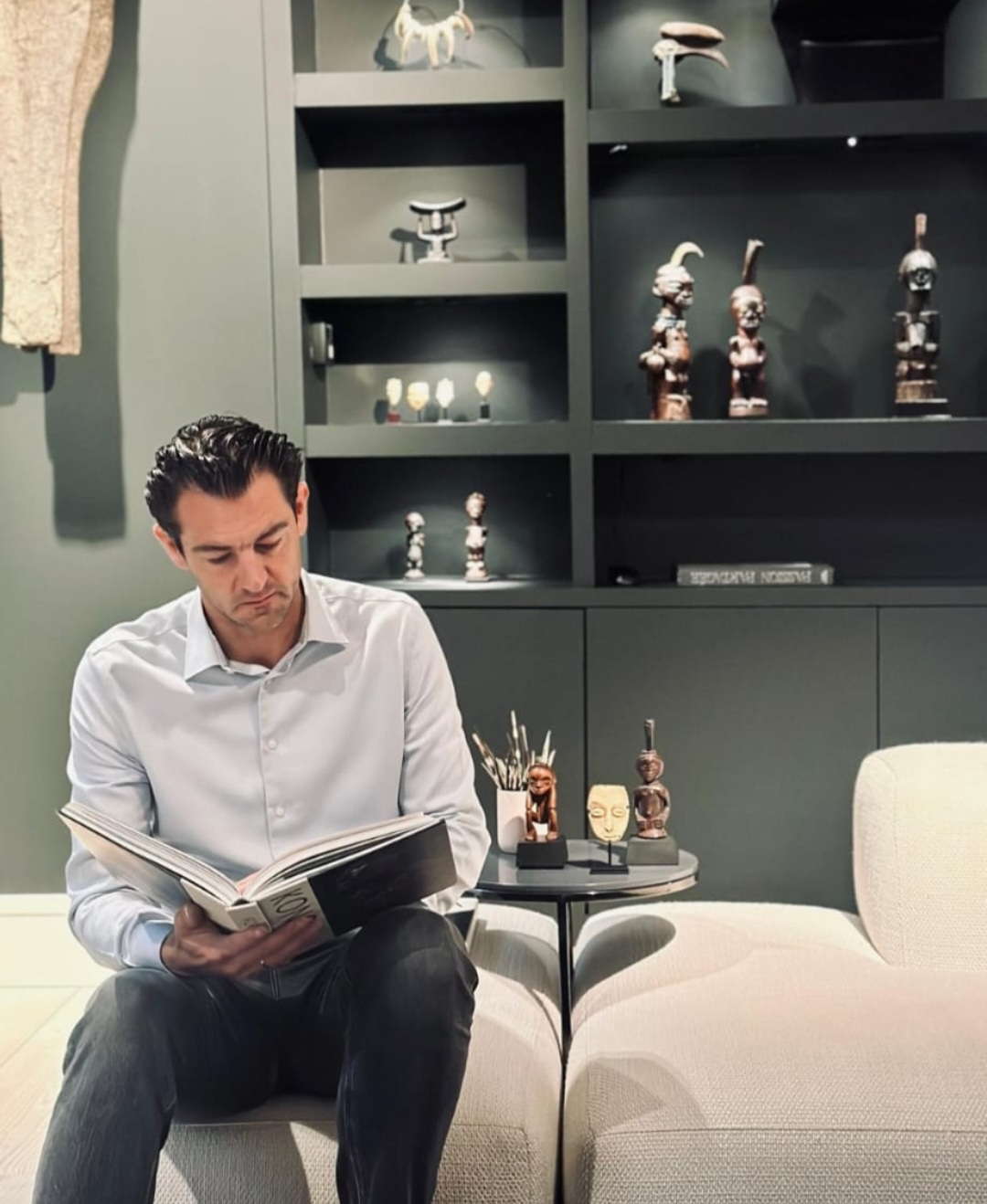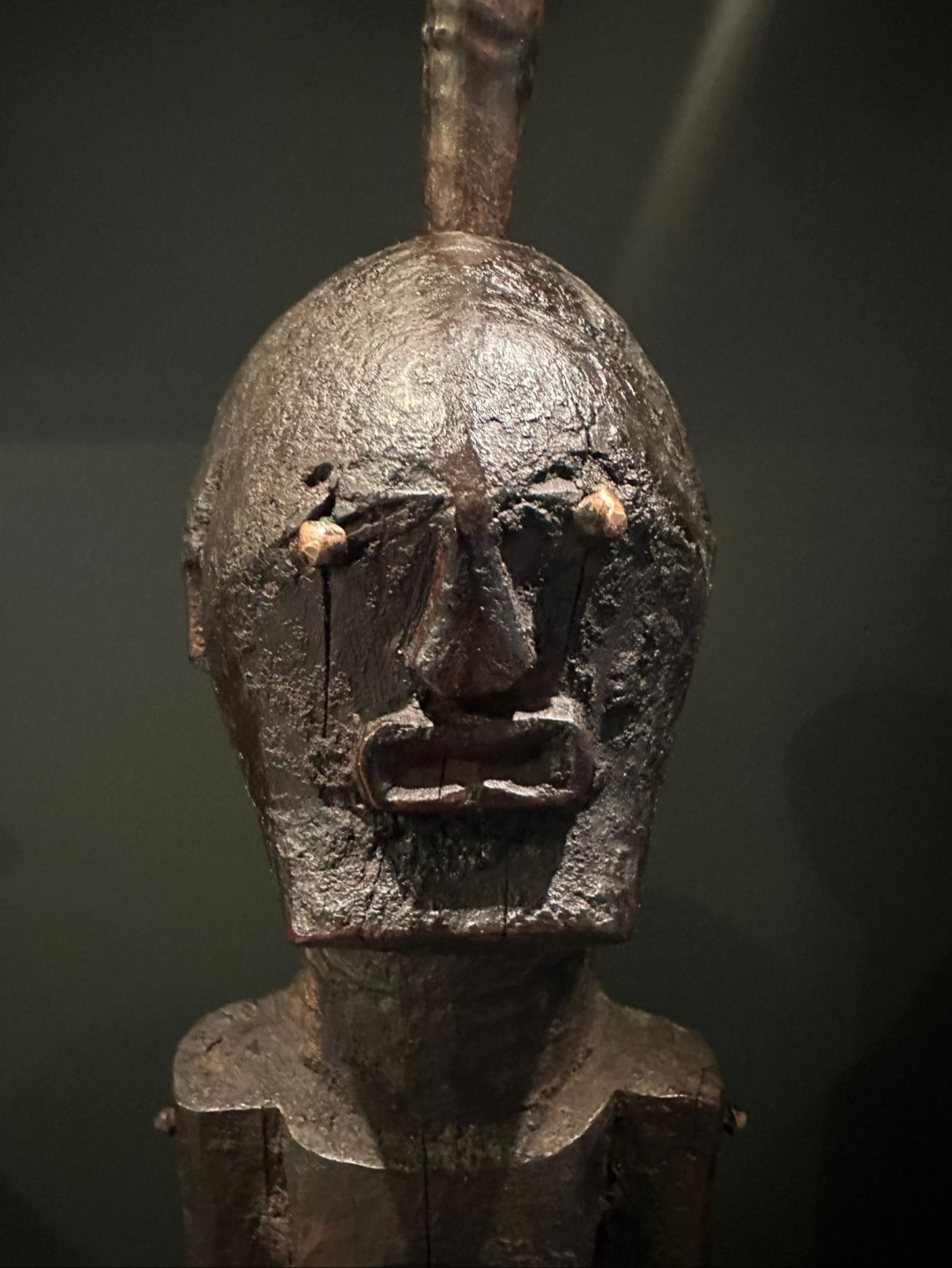Philippe Vanderpoorten, a Passionate Collector of African Tribal Art

Philippe Vanderpoorten is a passionate Belgian collector of African tribal art, particularly from Congo.
Philippe's fascination with the continent's rich cultural heritage started at an early age. His years spent living in South Africa further deepened his connection to African traditions.
ArtDependence (AD): When did your interest in African tribal art originated ?
Philippe Vanderpoorten (P.V.): First of all my interest in art is much more diverse than African or tribal art, but yes I focus mostly on Africa, it’s an incredible form of art. The African continent and its very rich and diverse cultures and traditions have always attracted me. Somehow the link to Africa is in my blood, my grandfather was a chef on the Congoboats from Antwerp, crossing the ocean and entering the mighty Kongo River.
The stories he told me as a child about Africa triggered my fascination and interest in it’s culture. In my late 20’s I lived in South Africa for a few years and traveled mostly in the south of the African continent. Once you lived in Africa, experienced the light, scent, sound and its rich variation, it leaves you an imprint , hard to forget.
While living there, I got in contact with a few Congolese friends who mostly imported objects made for the market. As a Belgian citizen, I always feel uncomfortable when interacting with the Congolese, I don’t feel proud about our colonial past and the white supremacy we gave ourselves. Anyhow, it triggered my interest in the African culture and art even more and that’s where the passion in collecting African ethnic art started.

Songye Tribe, Congo, ex. Private Collection Ladislas Segy, New York Courtesy: Philippe Vanderpoorten Collection
AD: Is there a special niche you are specialized in and/or do you want to widen your scope?
P.V.: Well Africa is big, and it’s cultures and tribes countless, so when building up a collection , one has to focus on a specific country, area or even a particular tribe as some collectors do. I mostly focus on the Congolese art because in my opinion it is one of the most intriguing and diverse African countries and due to our colonial past, we Belgians have a strong connection with its culture. In 1987 the first specialized book in Congolese ethnic art was made by scholar, collector and dealer, Marc Leo Felix : “100 Peoples of Zaire and their sculptures”.
In this book, known as “the blue book” among collectors, Mr. Felix, the biggest collector of Congolese art worldwide, drew more than 2.000 tribal objects and described each of them. His main source, as he writes in the preface of this book : “Written in pencil, on termite-eaten papers, by diligent malaria-ridden missionaries a century ago”. The blue book is a great tool to understand how diverse the Congolese tribes and their art and traditions are.
The only thing Mr Felix did wrong in my opinion, was making the book alphabetic, so I took it apart and regrouped the pages by relevant tribes and areas. We should understand that the objects collected by missionaries around 1900 were mostly collected with a scientifical background for study and not for the love of the African art. It's only from the 20’s and 30’s when great modern artists like Brancusi, Modigliani, Picasso, Epstein, Man ray, Max Ernst, Matisse, …, all passionate tribal art collectors, made clear that their art was inspired on tribal items, it triggered the interest of collectors, musea and institutions.
To understand the importance and influence of ethnic art in modern art we know today, I recommend the book “Primitivism in 20th Century Art” by the Museum of Modern Art, New York. I was mind blown by how much ethnic art influenced the nowadays highly valued modern art. Some of the African works are made by artists at least as talented as the modern ones mentioned above, and have found their place in collections next to these modern works. Unfortunately many of the African artists were never known by name, but their work, and the fact their objects were the inspiration for the great modern artists, shows how ingenious they were. The best part of most ethnic art is that there is no ego. It is about the work of art, the masterpiece and again, not the ego. That in my opinion is the most pure form of art .

Songye Tribe, ex Plasmans Collection Courtesy: Philippe Vanderpoorten Collection
AD: Where do you mostly buy ?
P.V.: Where I buy is very diverse. Let’s start with the tribal art dealers and galleries. The heart of the tribal art is in the Sablon area in Brussels, here most of the quality pieces have found their way into private collections and even musea. Dealers like Pierre Dartevelle and Marc Felix have sold among the best pieces in the world. But the market is changing, dealers come to an age where they close their dusty galleries and there are not much young dealers to continue the business. I must say there are some exceptions, courageous dealers like Claes have changed the approach of the classic galleries and brought a new vibe that attracts among the best classic and modern art collectors!
So where else to buy: auctions . There are the well known auction houses such as Christie’s, Sotheby’s, Bonham’s etc where record prices in tribal art are achieved, but also dozens of smaller auction houses where, from time to time, an African object ends up between paintings and other antique or brocante. The biggest risk of these : fake items, and unfortunately there are far more fake items than genuine items.
I will try to explain the different categories of ethnic art :
Objects (masks, figures, staffs, … ) that were made for the African people and used by them and collected mostly by missionaries or colonials in the late 18th, early 20th century for study. These are the real valuable works of art. Many of these objects have been published and have a pedigree that is verifiable. A great part of them is nowadays part of important museum collections , but lots are still in private hands. African people are smart, and they realized quickly that the Europeans had a great interest in their art, so they started creating objects meant to be sold to the colonial occupier. Some of these were already made at the end of the 19th century and remain very sought after and valuable. The difference is that they weren’t used in a ritual way and don’t have any spiritual value. You have to understand that in many tribes like the Songye of Congo, a figure was made by a carver. The figure itself had no spirital power, it was just wood. After the commissioned work was finished by the carver, it went to the Nganga, a spiritual leader who gave the figure its magical powers. This was mostly done by inserting magical substances in the belly or back of the figure and by placing an animal horn in the head and filling this with magical substances such as gunpowder, ash, copper etc. One of my strongest ritual figures is a Songye figure where the Nganga inserted human molars into the face of the figure and a exceptional big antelope horn. When the Tribes were converted to Catholicism or Islam, they had to separate from their divination objects. Before doing so they often removed the magical substances and gave the object without any spiritual power left.
There are the objects made for the market. Are they fake; well most of them unfortunately are. There are the bad copies, often made in Cameroon, known for its fake industry and there are real good copies, hard to see . I admit, I also bought some fakes, I keep them, it’s a part of the process of becoming a good collector. Keeping them and looking at them from time to time keeps your eye trained! I guess all collectors have had some of these good copies..
AD: As you mentionned above, there is a lot fake African tribal art in the market, how do you avoid being trapped in that when doing a purchase ?
P.V.: Everybody gets trapped sooner or later. I know great collections where I found fake items that even have been published by scholars. The best way to minimalize the risk, is to compare with objects of the same tribe or the same carver. The best tool to do this is the archive that my friend Guy and his son Titus van Rijn have created over the past decades. Almost any genuine African object that has been exhibited, published or auctioned, can be found in this database. To give you an example, the database contains more than 50.000 Congolese objects. Also, visit museums, visit the great exhibitions like Parcours Des Modes in Paris or Civilisations in Brussels, train your eye! Did you know that Jaques Chirac had a great passion for tribal art? He even dedicated his name to the museum Quai Branly- Jacques Chirac.

Chokwe Pendant, Congo, Ivory ex Private Collection Jo De Buck, ex Alain Guisson Courtesy: Private Collection Philippe Vanderpoorten
AD: What piece is for you the most important piece in your collection ?
P.V.: Every piece in my collection has his importance, so that’s a difficult question to answer. I consider the object, often ritual pieces as a personal or sacred item. I can enjoy looking at an ivory Mangbetu hairpin , the way these are carved from an elephant tusk. I love the incredible detail of the face of one of my Yombe figures, the ritually chipped teeth, but I also love the rough aggressive look of the Songye with the molars in it’s face. The most important piece might be my Kuba mask, a genuine work of art, difficult to believe it was made in Central Congo more than 100 years ago, previously in the collection of the late painter Philip Pearlstein… . Or my Dogon elephant mask that was already published in the 50’s by Beyeler, with an incredible patina. Picasso had a similar example in his collection!
AD: What is your opinion on the restitution of African tribal art to the countries of origin?
P.V.: Objects that were stolen from those countries or tribes should be returned if their conservation is guaranteed. In the past the conservation was very uncertain, but these days, the Africans know very well how important the conservation of these objects is.
As former colonial occupiers we took away a big part of Africa’s culture and tradition. The least we can do is return the objects that we took in our colonial occupation period. It’s what I call respect and taking responsibility for our past actions.
AD: What advice do you have for young collectors ?
P.V.: Visit musea, read books, get a login on Guy van Rijn’s website, and learn. Visit galeries, try to feel and handle the objects, smell them. Once you experienced the smell of a fake object, you will never forget, it’s a typical and unique scent.
But most important, whatever they try to sell you, buy what you like, buy what you fall in love with. Collecting is a passion.
Galerie Frank Van Craen will exhibit some works from Philippe Vanderpoorten's collection in its Autumn Exhibition
Main Image: Collector Philippe Vanderpoorten
